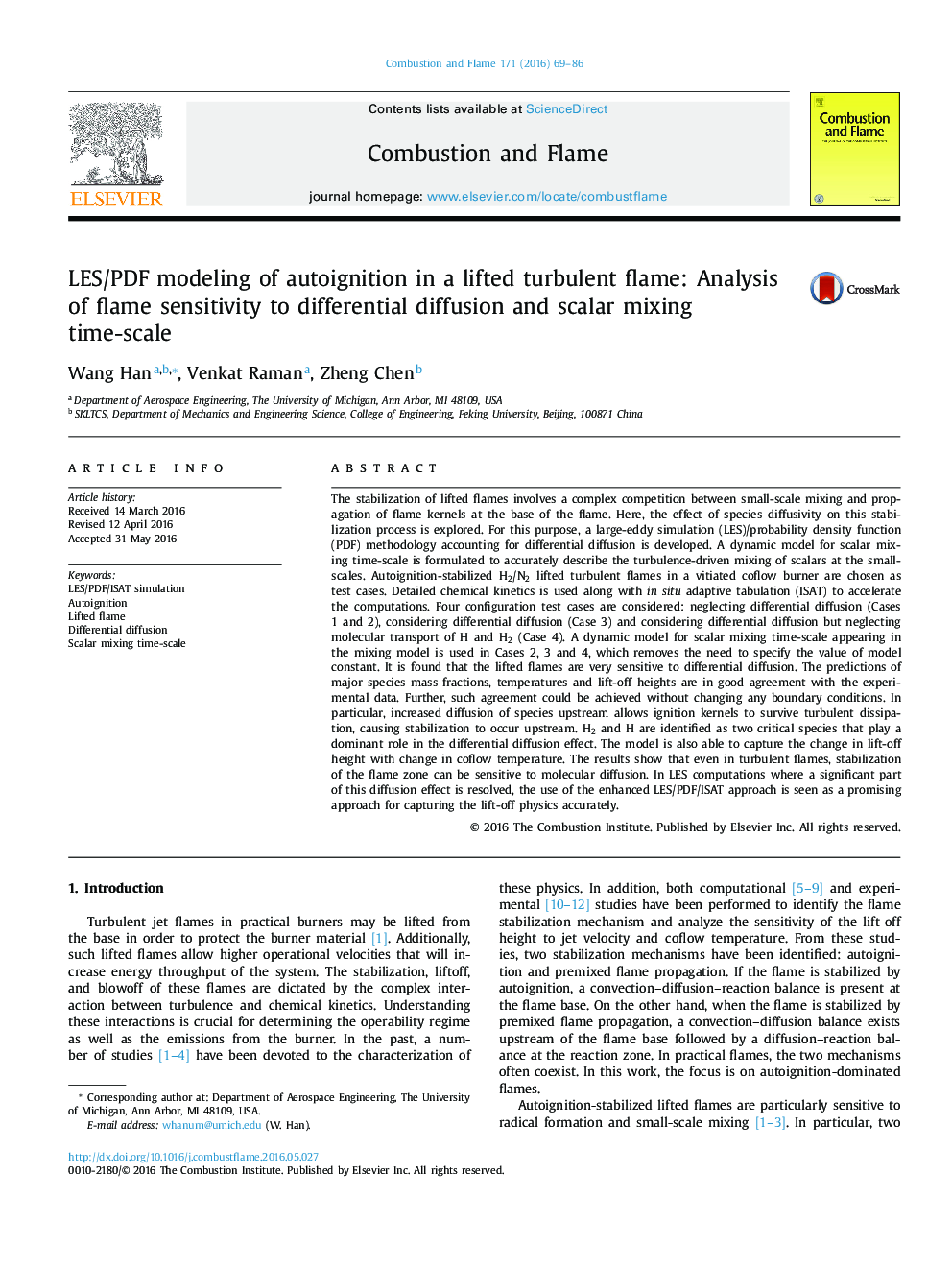| کد مقاله | کد نشریه | سال انتشار | مقاله انگلیسی | نسخه تمام متن |
|---|---|---|---|---|
| 168453 | 457927 | 2016 | 18 صفحه PDF | دانلود رایگان |

The stabilization of lifted flames involves a complex competition between small-scale mixing and propagation of flame kernels at the base of the flame. Here, the effect of species diffusivity on this stabilization process is explored. For this purpose, a large-eddy simulation (LES)/probability density function (PDF) methodology accounting for differential diffusion is developed. A dynamic model for scalar mixing time-scale is formulated to accurately describe the turbulence-driven mixing of scalars at the small-scales. Autoignition-stabilized H2/N2 lifted turbulent flames in a vitiated coflow burner are chosen as test cases. Detailed chemical kinetics is used along with in situ adaptive tabulation (ISAT) to accelerate the computations. Four configuration test cases are considered: neglecting differential diffusion (Cases 1 and 2), considering differential diffusion (Case 3) and considering differential diffusion but neglecting molecular transport of H and H2 (Case 4). A dynamic model for scalar mixing time-scale appearing in the mixing model is used in Cases 2, 3 and 4, which removes the need to specify the value of model constant. It is found that the lifted flames are very sensitive to differential diffusion. The predictions of major species mass fractions, temperatures and lift-off heights are in good agreement with the experimental data. Further, such agreement could be achieved without changing any boundary conditions. In particular, increased diffusion of species upstream allows ignition kernels to survive turbulent dissipation, causing stabilization to occur upstream. H2 and H are identified as two critical species that play a dominant role in the differential diffusion effect. The model is also able to capture the change in lift-off height with change in coflow temperature. The results show that even in turbulent flames, stabilization of the flame zone can be sensitive to molecular diffusion. In LES computations where a significant part of this diffusion effect is resolved, the use of the enhanced LES/PDF/ISAT approach is seen as a promising approach for capturing the lift-off physics accurately.
Journal: Combustion and Flame - Volume 171, September 2016, Pages 69–86